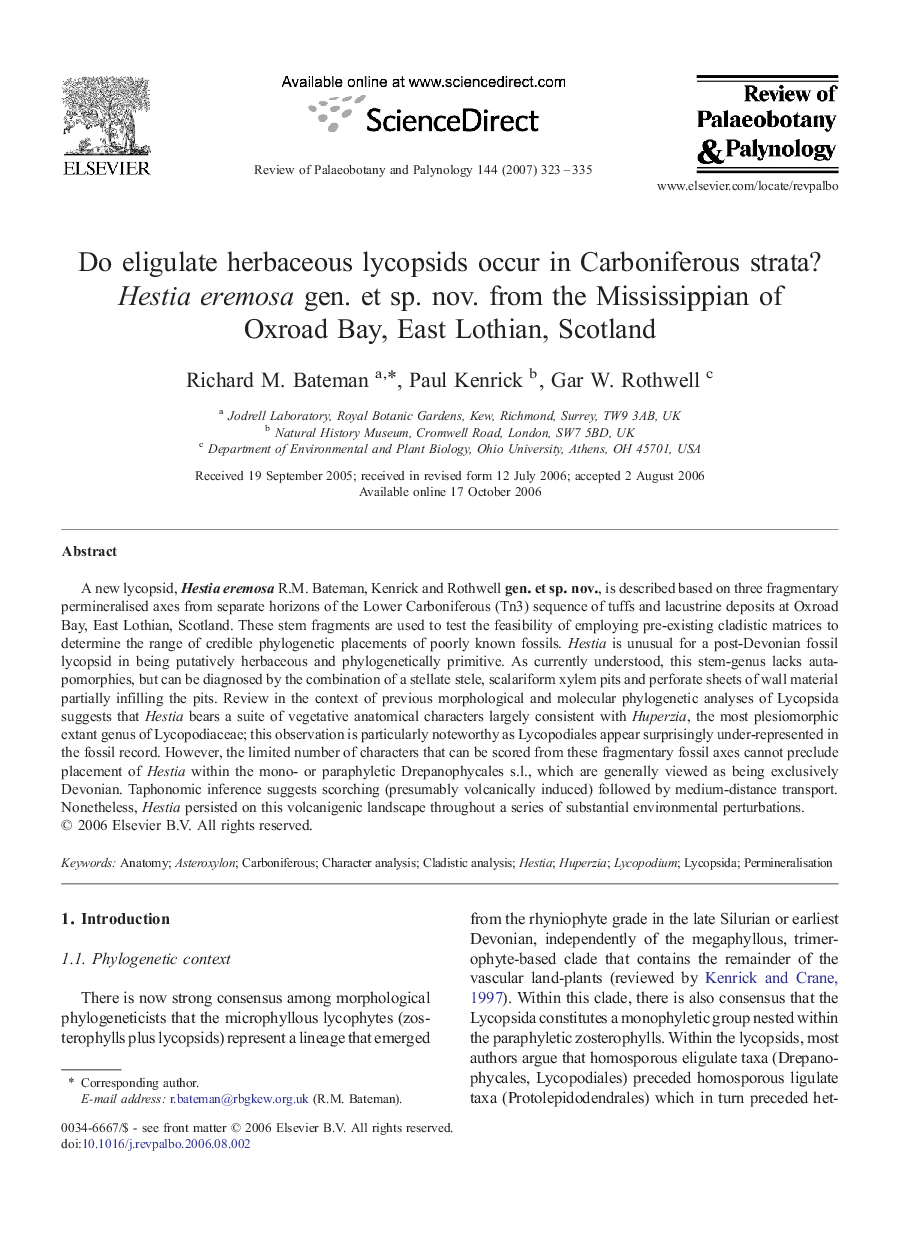| Article ID | Journal | Published Year | Pages | File Type |
|---|---|---|---|---|
| 4751122 | Review of Palaeobotany and Palynology | 2007 | 13 Pages |
Abstract
A new lycopsid, Hestia eremosa R.M. Bateman, Kenrick and Rothwell gen. et sp. nov., is described based on three fragmentary permineralised axes from separate horizons of the Lower Carboniferous (Tn3) sequence of tuffs and lacustrine deposits at Oxroad Bay, East Lothian, Scotland. These stem fragments are used to test the feasibility of employing pre-existing cladistic matrices to determine the range of credible phylogenetic placements of poorly known fossils. Hestia is unusual for a post-Devonian fossil lycopsid in being putatively herbaceous and phylogenetically primitive. As currently understood, this stem-genus lacks autapomorphies, but can be diagnosed by the combination of a stellate stele, scalariform xylem pits and perforate sheets of wall material partially infilling the pits. Review in the context of previous morphological and molecular phylogenetic analyses of Lycopsida suggests that Hestia bears a suite of vegetative anatomical characters largely consistent with Huperzia, the most plesiomorphic extant genus of Lycopodiaceae; this observation is particularly noteworthy as Lycopodiales appear surprisingly under-represented in the fossil record. However, the limited number of characters that can be scored from these fragmentary fossil axes cannot preclude placement of Hestia within the mono- or paraphyletic Drepanophycales s.l., which are generally viewed as being exclusively Devonian. Taphonomic inference suggests scorching (presumably volcanically induced) followed by medium-distance transport. Nonetheless, Hestia persisted on this volcanigenic landscape throughout a series of substantial environmental perturbations.
Keywords
Related Topics
Physical Sciences and Engineering
Earth and Planetary Sciences
Palaeontology
Authors
Richard M. Bateman, Paul Kenrick, Gar W. Rothwell,
